The IN-12A is a relatively cheap 80s cold cathode tube made is Soviet Russia and is by far the most common nixie found on ebay. Price is around $20US for a lot of six (new old stock).
The IN-12A has 12 pins. Pin 1 is the anode. This pin is tied to 170-200V DC. Pins 2-11 are the individual number cathode pins. When you want to illuminate a particular number, place 0V on the corresponding cathode pin (be sure to include a current limiting resistor on the anode pin, seen further in the log). Please refer to the image and table below.
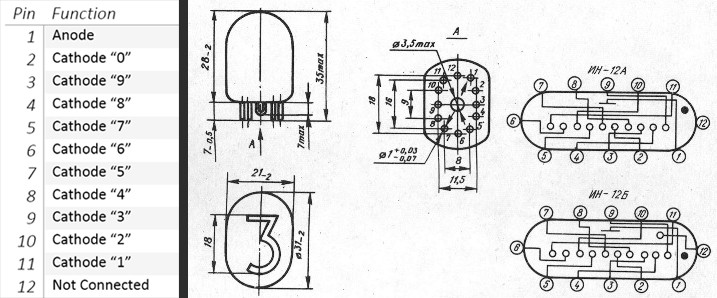
The IN-12A has a strike voltage of about 170V, that is the voltage at which conduction between the anode and cathode can begin so the number can illuminate. For conduction to start, it takes time, as the nixie's gas needs an ionized path from anode to cathode. Once conducting, the anode to cathode voltage will drop and current will increase. Both will reach a steady state in about 100us.
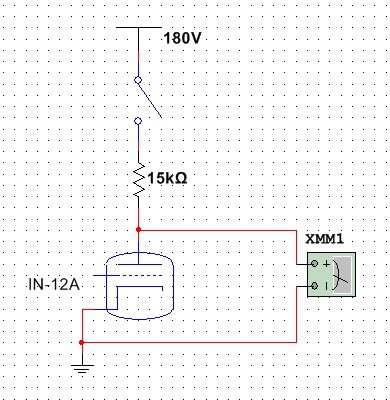
Like the test circuit seen above, 180V from a boost converter was applied to the nixie tube's anode through a series 15K current limiting resistor and GND was applied to the number three cathode. After conduction, the anode to cathode voltage dropped to about 143V. This is below the strike voltage now, but don't worry, the ionized gas path will remain, this is normal... The current through the nixie tube ended up at about 2.5mA, which is the nominal value for the IN-12A.
The oscilloscope trace above is an example of testing a cathodes step response (number three cathode). The trace may vary slightly for different number cathodes, as the anode to cathode distance and cathode surface area varies. Analyzing the oscilloscope trace, it can been seen that it takes about 80us for the number three cathode to reach steady-state. A comparison between cathode settling times needs to be taken into consideration if I wish to use PWM to effect the brightness of the display.
 Johnny
Johnny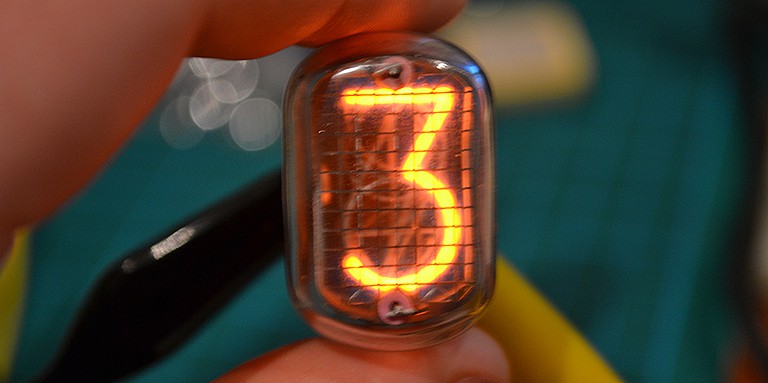
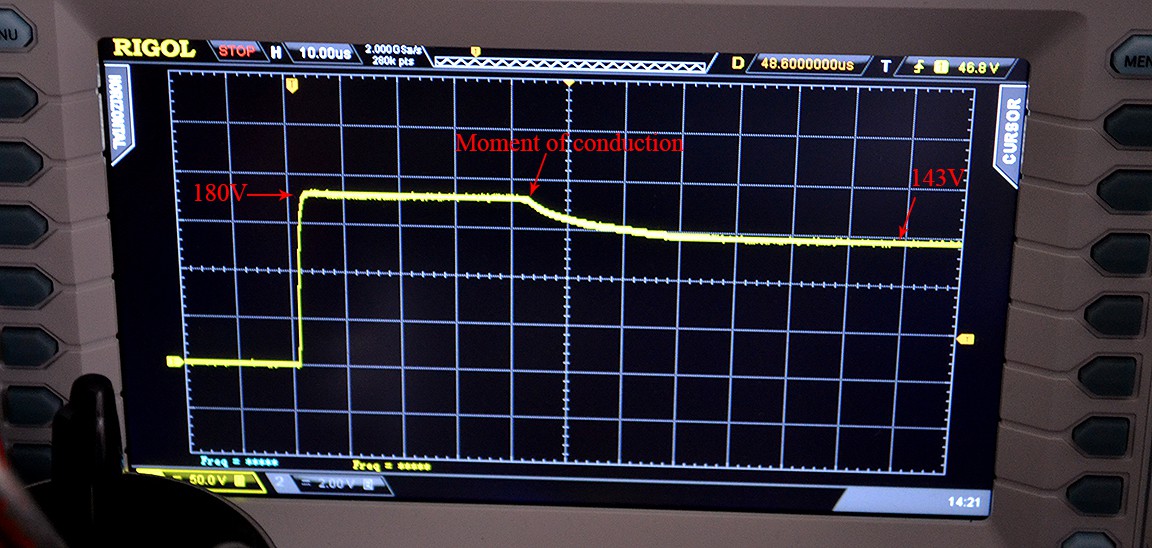
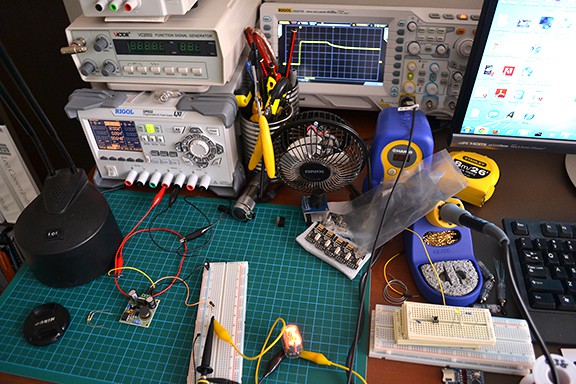
Discussions
Become a Hackaday.io Member
Create an account to leave a comment. Already have an account? Log In.